Kkaennip Kimchi (Korean Perilla Leaf Kimchi)
Enjoy the authentic taste of Kkaennip Kimchi, also known as Perilla Leaf Kimchi. This Korean summer staple is easy to make at home and packed with robust flavors and nutrition. Step-by-step introduction provided. Vegetarian or vegan diet adaptable!
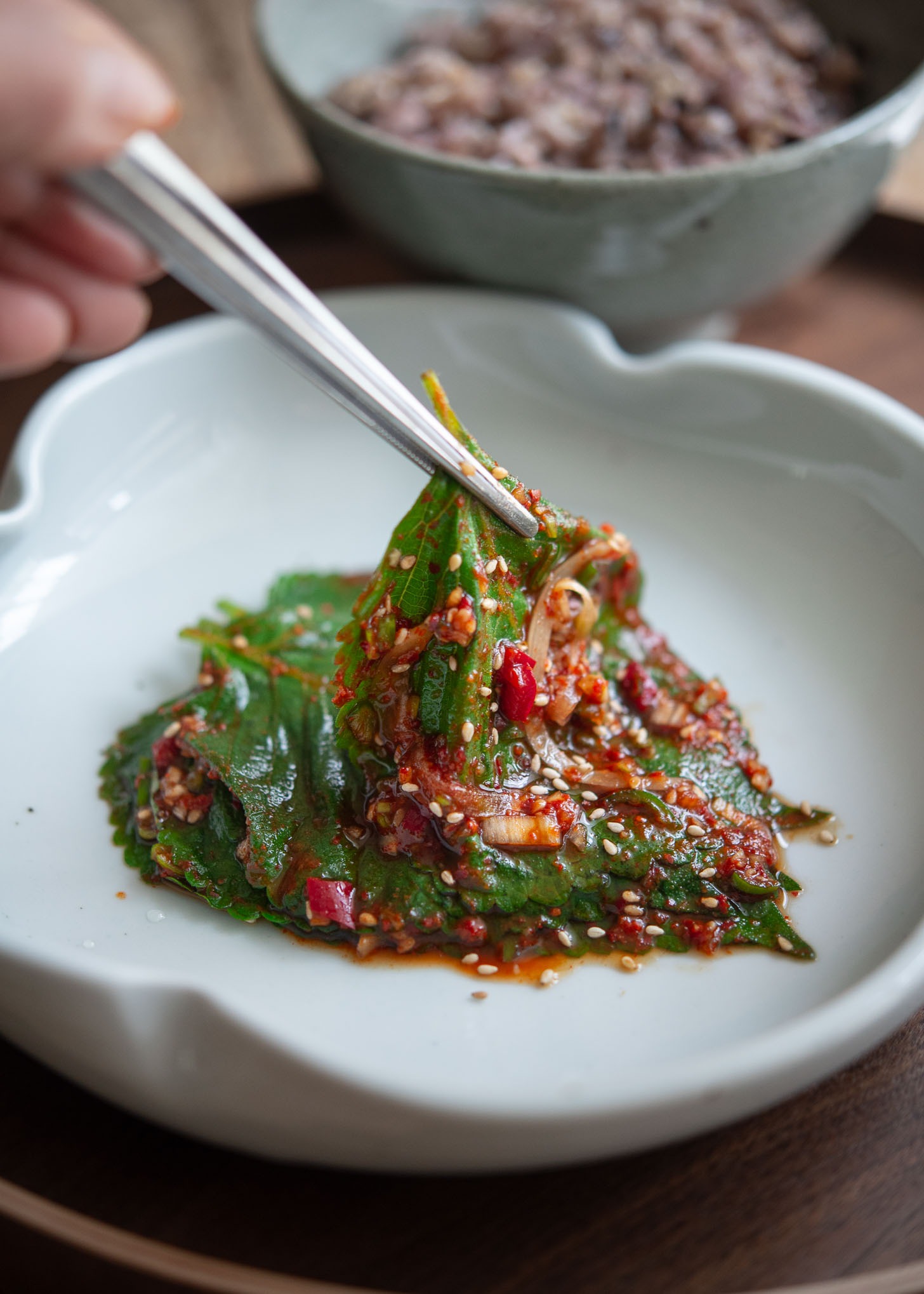
If I had to choose just one type of kimchi to savor all summer long, it would undoubtedly be Perilla Leaf Kimchi, also known as Kkaennip Kimchi in Korea. This aromatic dish is a summer staple and is highly cherished in Korean cuisine.
The unique taste and scent of the perilla herb can be polarizing; it’s a love-it-or-hate-it kind of Korean delicacy. But if you’re adventurous enough to try, give it at least three chances.
Once your palate adjusts and you acquire a taste for it, you’ll find yourself falling in love with both perilla leaves and this specific type of kimchi.
Along with Cucumber Kimchi and Green Onion Kimchi, This Perilla Kimchi is one of the most sought-after summer kimchis in Korea.
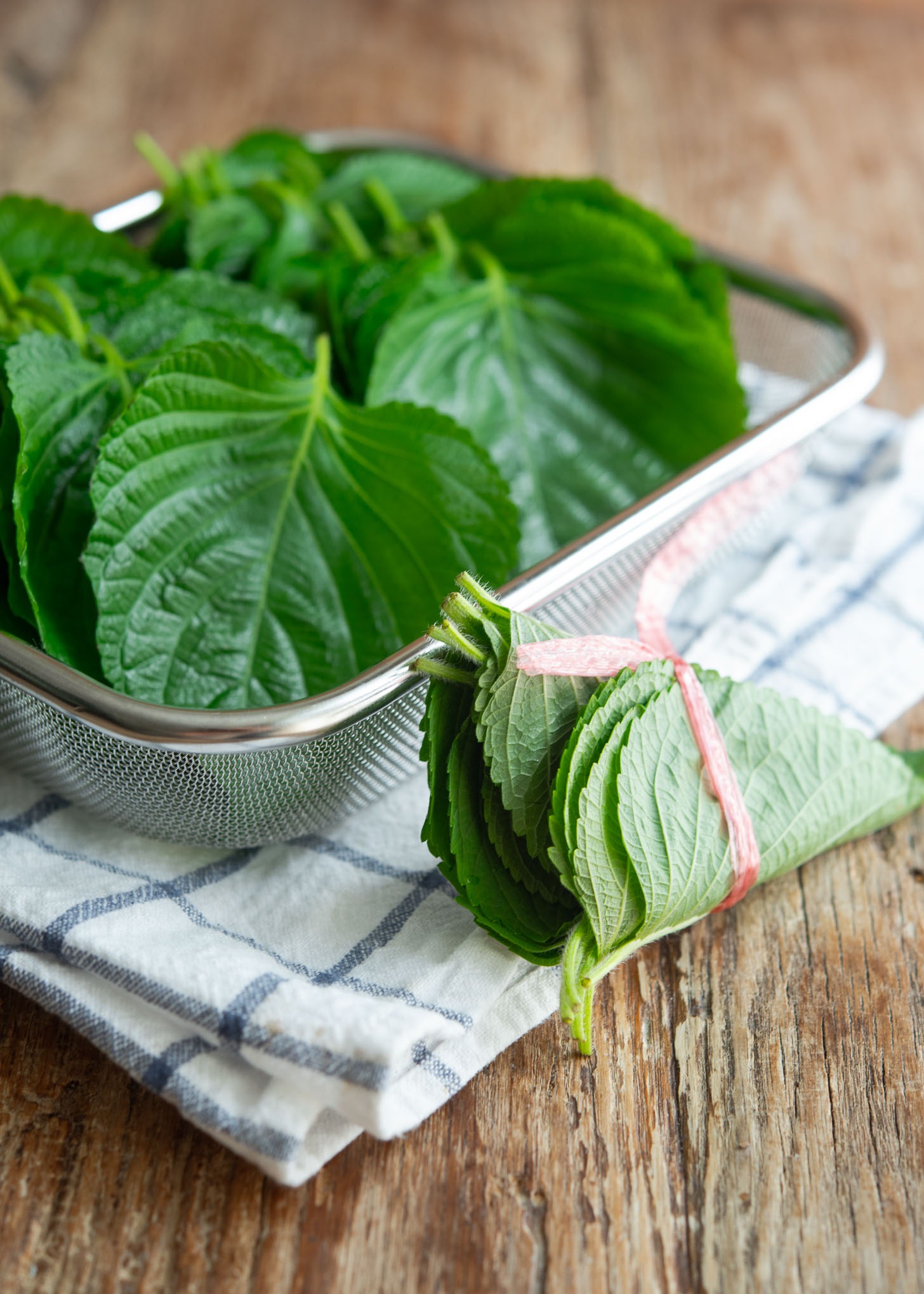
Get new recipes via email
What are Perilla Leaves?
Perilla leaves, also referred to as Kkaennip in Korea, are aromatic herbs harvested from perilla plants, which grow from seeds known as deulkkae (들깨) in Korean. Rich in Vitamin C and fiber, these leaves are a staple in Korean cooking.
As members of the mint family, they boast a unique aroma that’s a delightful blend of mint and basil. If you’re a fan of basil’s fragrance, you’re likely to fall in love with perilla leaves as well!
Perilla oil (deulgirum, 들기름), extracted from perilla seeds, is also a widely-used essential ingredient in Korean cuisine.
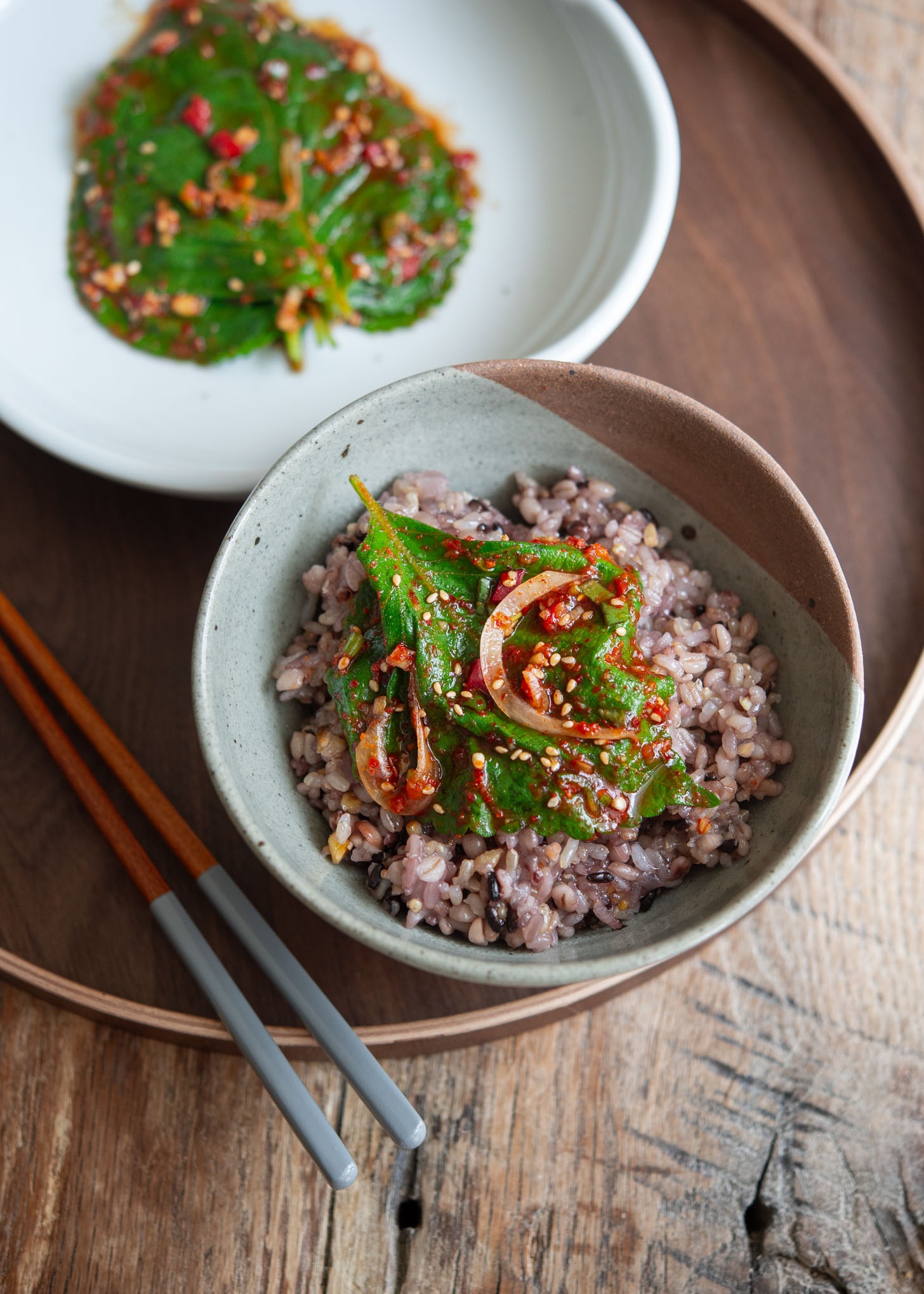
Frequently Asked Questions
Are Perilla Leaves the Same as Sesame Leaves?
Perilla leaves are often confused with sesame leaves, especially in Korean cooking. However, sesame leaves are not actually used in Korean cuisine; only the sesame seeds make the cut.
On the other hand, both perilla leaves and their seeds are essential ingredients in a variety of Korean dishes.
What’s the Scent of Perilla Leaves?
Belonging to the mint family, perilla leaves offer a unique but subtle aroma. Think of it as a blend between mint and basil, a combination that brings a distinctive character to Korean dishes.
Can’t Find Perilla Leaves? Here’s What You Can Do
If you’re unable to find perilla leaves, they can often be omitted, especially if they’re not the main focus of the dish, like in certain Perilla Kimchi recipes or specialized side dishes.
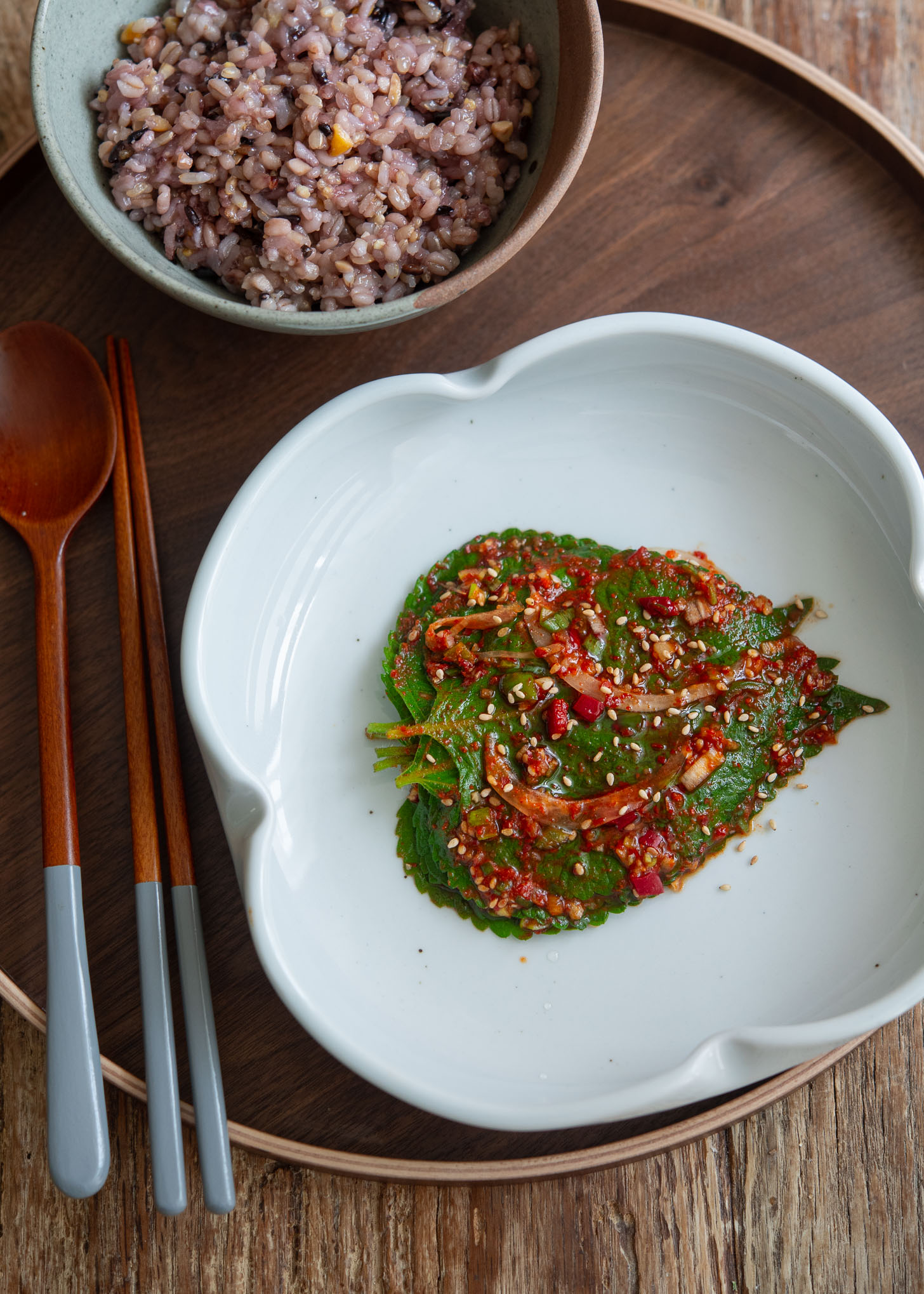
Dishes Featuring Kkaennip
Excited to start cooking with perilla leaves? Here are some recipes to get you started:
Ingredients Needed
Ready to make your own delicious Perilla Kimchi? Here’s what you’ll need:
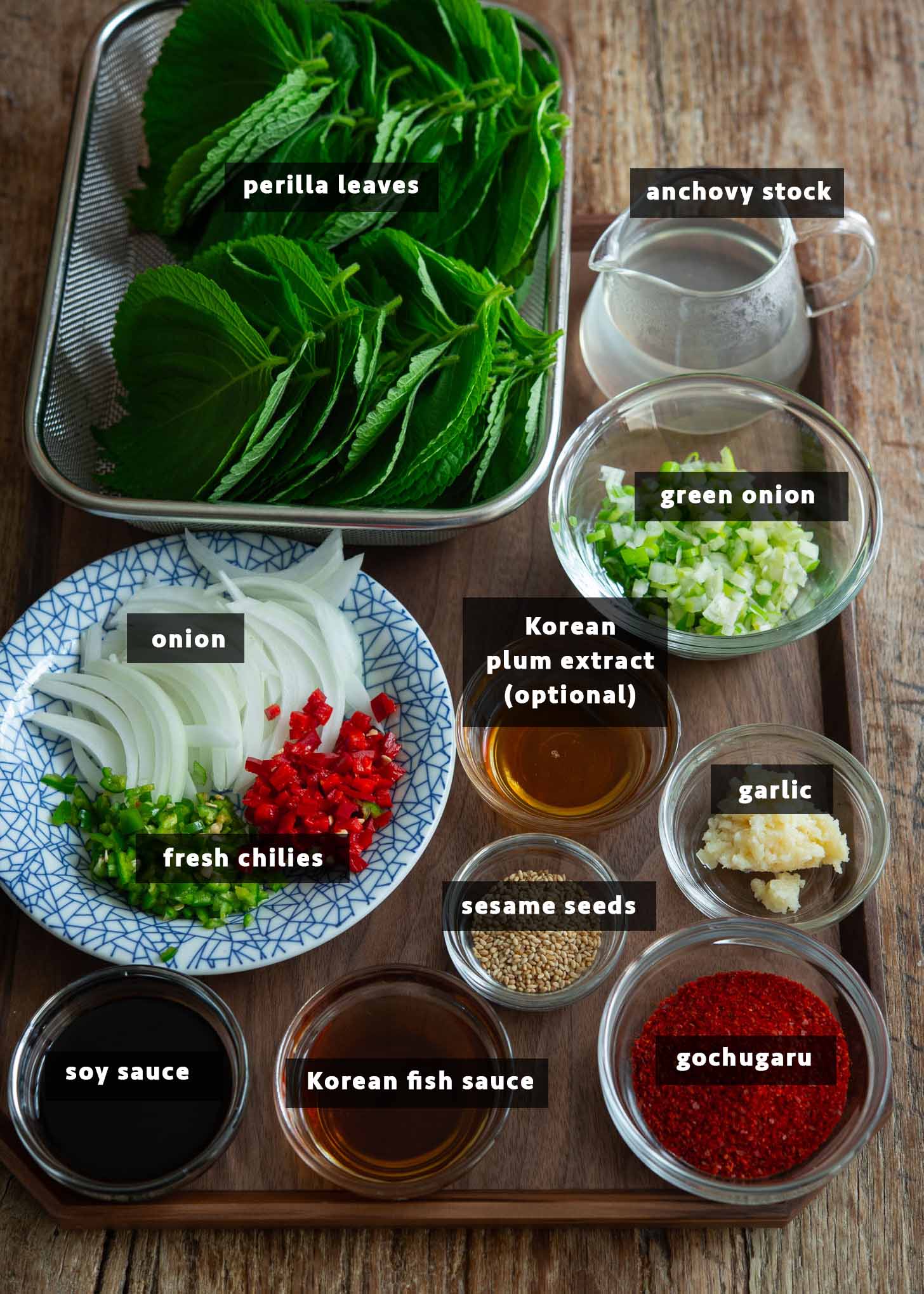
- Perilla Leaves: The star ingredient, these leaves provide the unique taste and texture that make this kimchi special.
- Anchovy Sauce (Korean Fish Sauce): Used for depth and umami, anchovy sauce is a key flavoring agent in this dish.
- Soy Sauce: Brings out the rich, authentic flavors of Korean cuisine.
- Korean Chili Flakes (Gochugaru): To add that signature spicy kick, Korean chili flakes are a must-have.
- Anchovy Stock: Adds umami depth to the taste. Substitute with water if not available
- Fresh Produce: Onion, green onion, garlic, and red & green chili for layered complexity.
Optional Add-ins:
- Korean Plum Extract (Optional): For an added sweetness with a hint of tang. Substitute with sugar if not available
- Sesame Seeds: To add a nutty crunch.
For a Vegetarian or Vegan Option:
Replace the anchovy sauce and anchovy stock with Korean soup soy sauce and water in the recipe.
How to Make Kkaennip Kimchi (Step-by-Step)
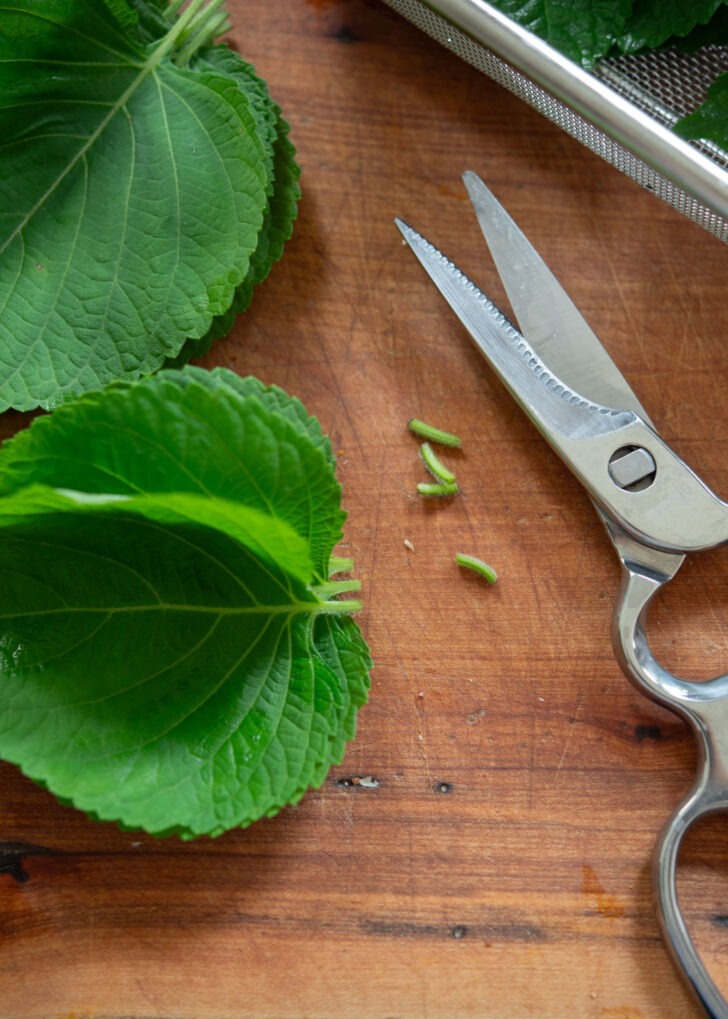
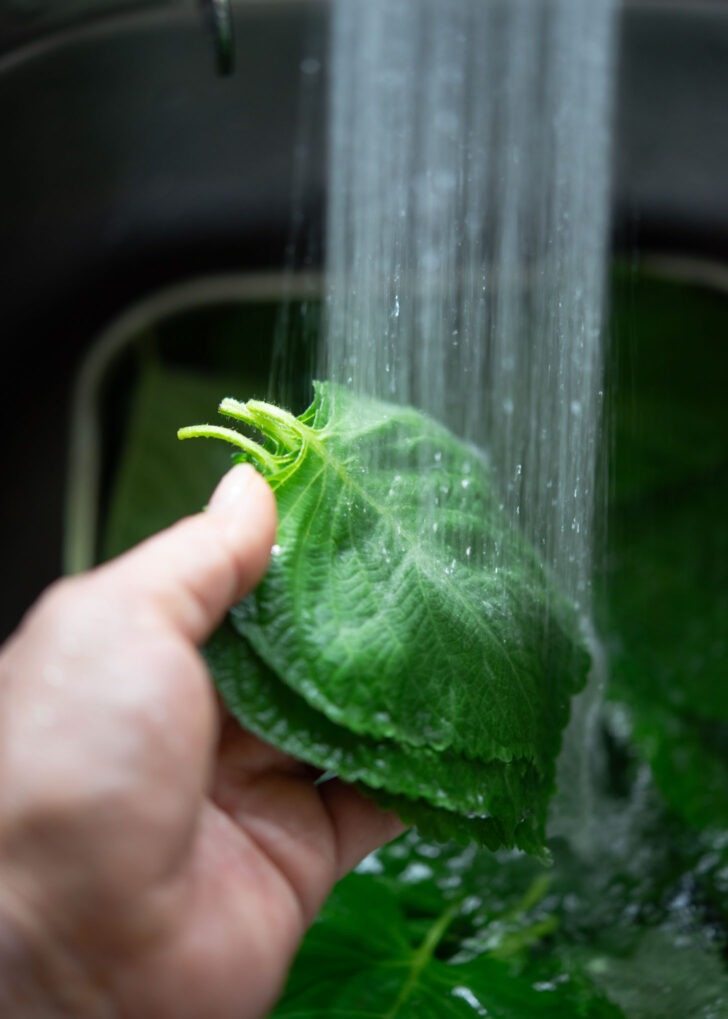
Step 1. Clean Perilla Leaves
- Trim off the extra stem from the leaves.
- Thoroughly clean the perilla leaves by soaking them in water. Use a salad spinner to quickly remove moisture. Set aside.
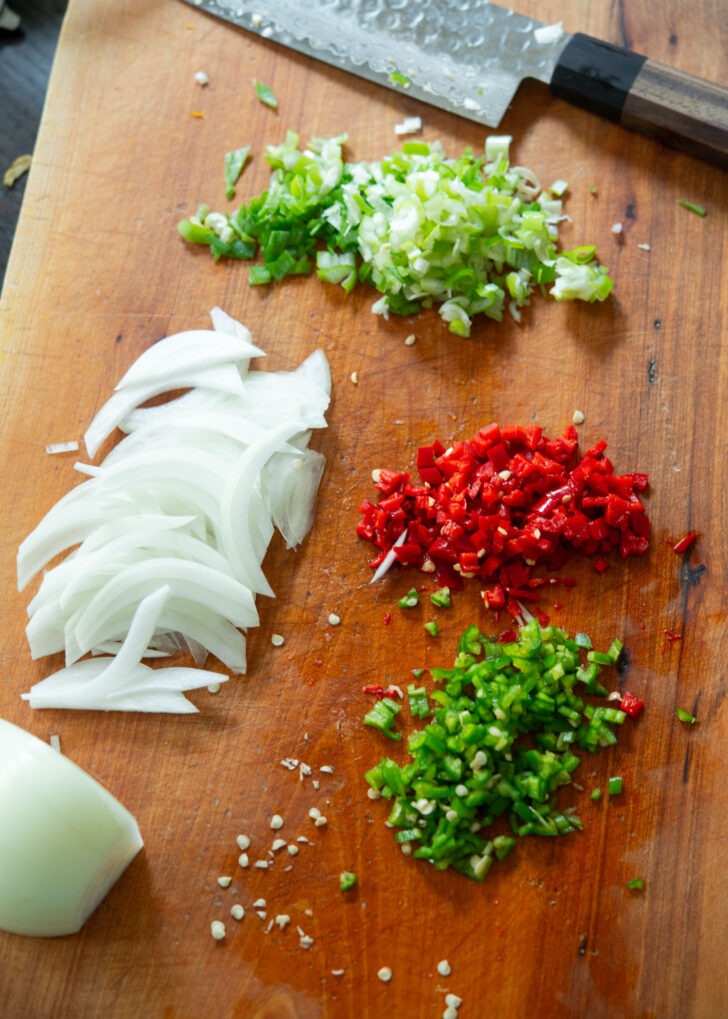
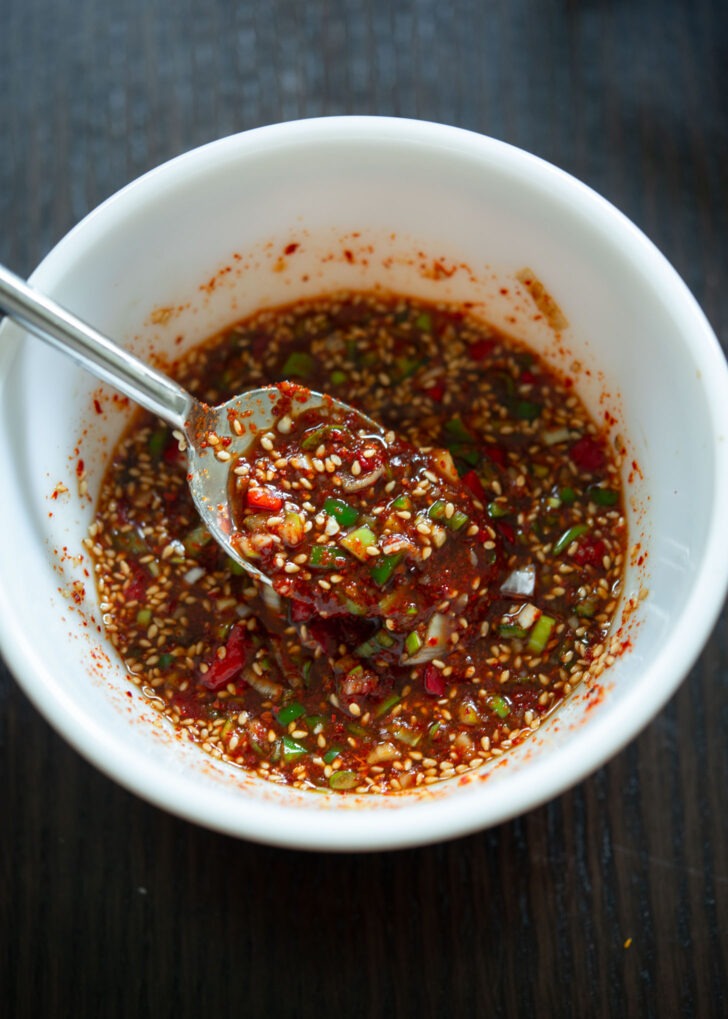
Step 2. Prepare Seasoning
- Chop fresh produce finely. Slice onion very thinly and set aside.
- Mix anchovy sauce, Korean soup soy sauce, chili flakes, optionally sugar, corn syrup, garlic, chilies, and sesame seeds.
- Add 1/4 cup of the cooled anchovy stock (or water) to form a slightly runny paste.
To prepare Anchovy Stock: Simmer dried anchovies in water for 5 minutes. Let it cool.
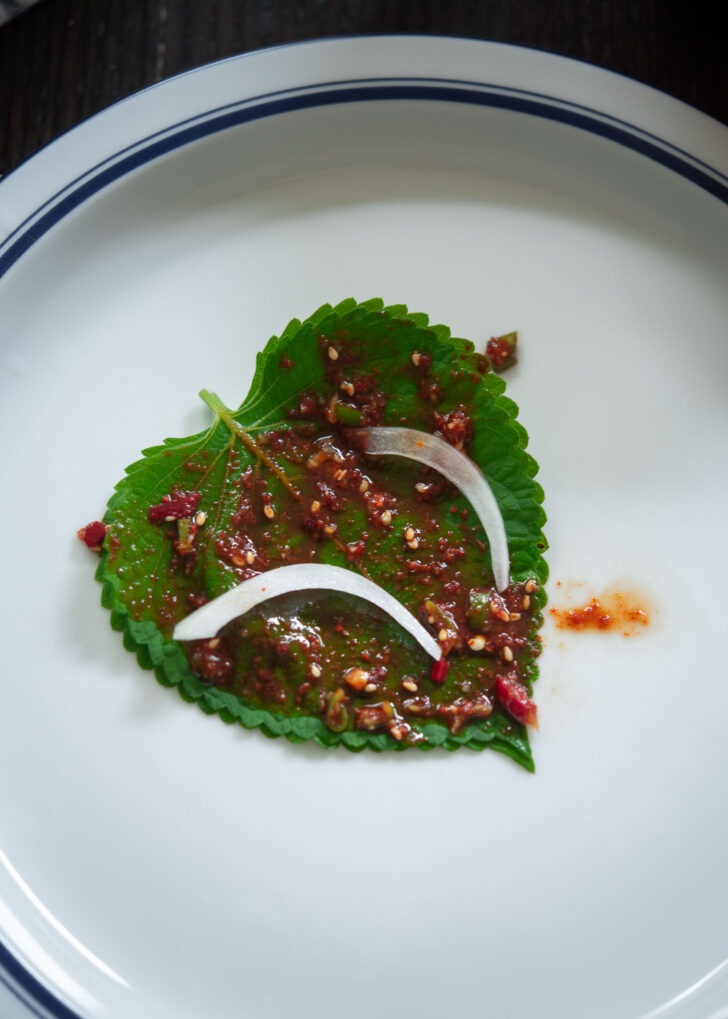
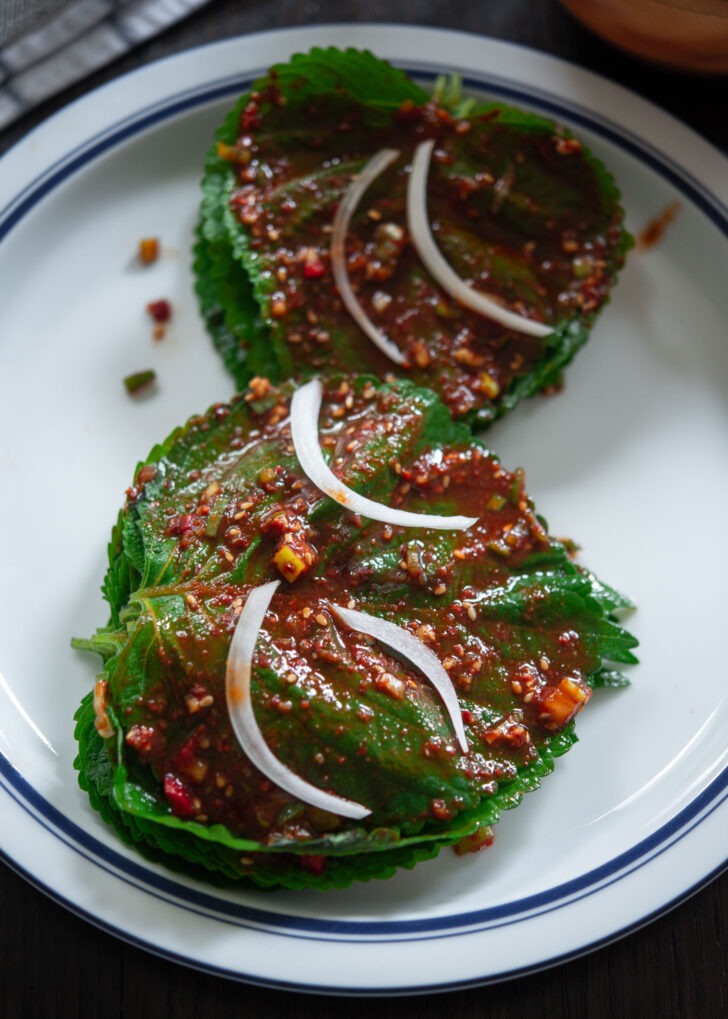
Step 3. Assemble Kimchi
- Stack 2-3 leaves, spread a tablespoon of seasoning mix on the top leaf. Place thinly sliced onion strips on top.
- Repeat as you stack the leaves together.
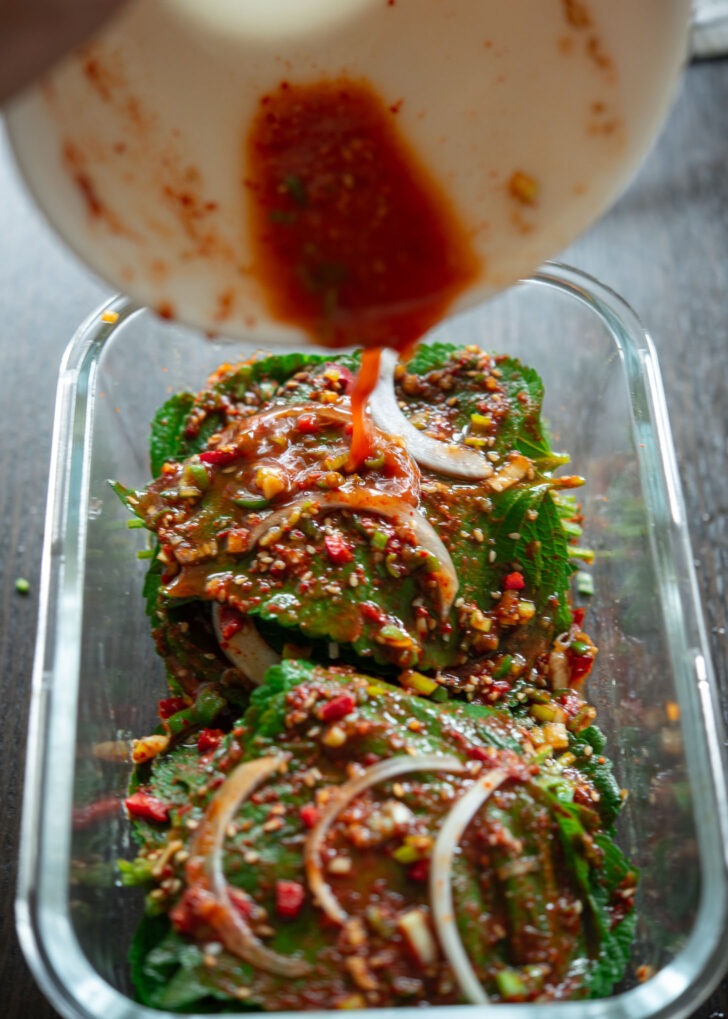
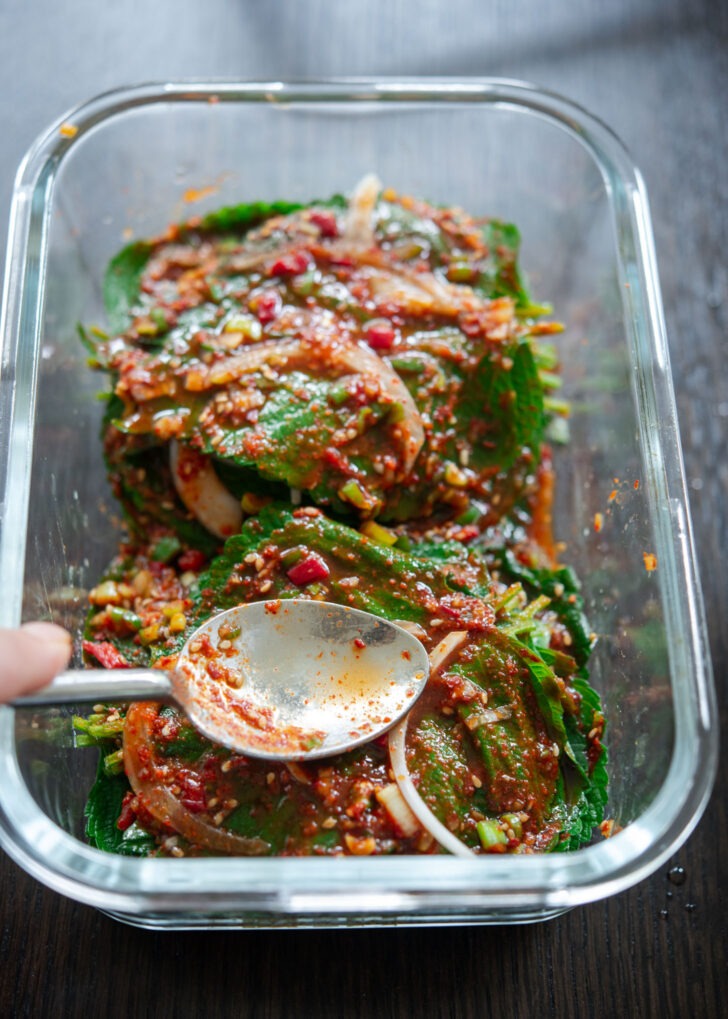
Step 6. Transfer to a Storage Container
- Place the assembled leaves in a kimchi container. Add remaining stock to leftover seasoning, mix and pour over leaves.
- Press down with spoon to remove air.
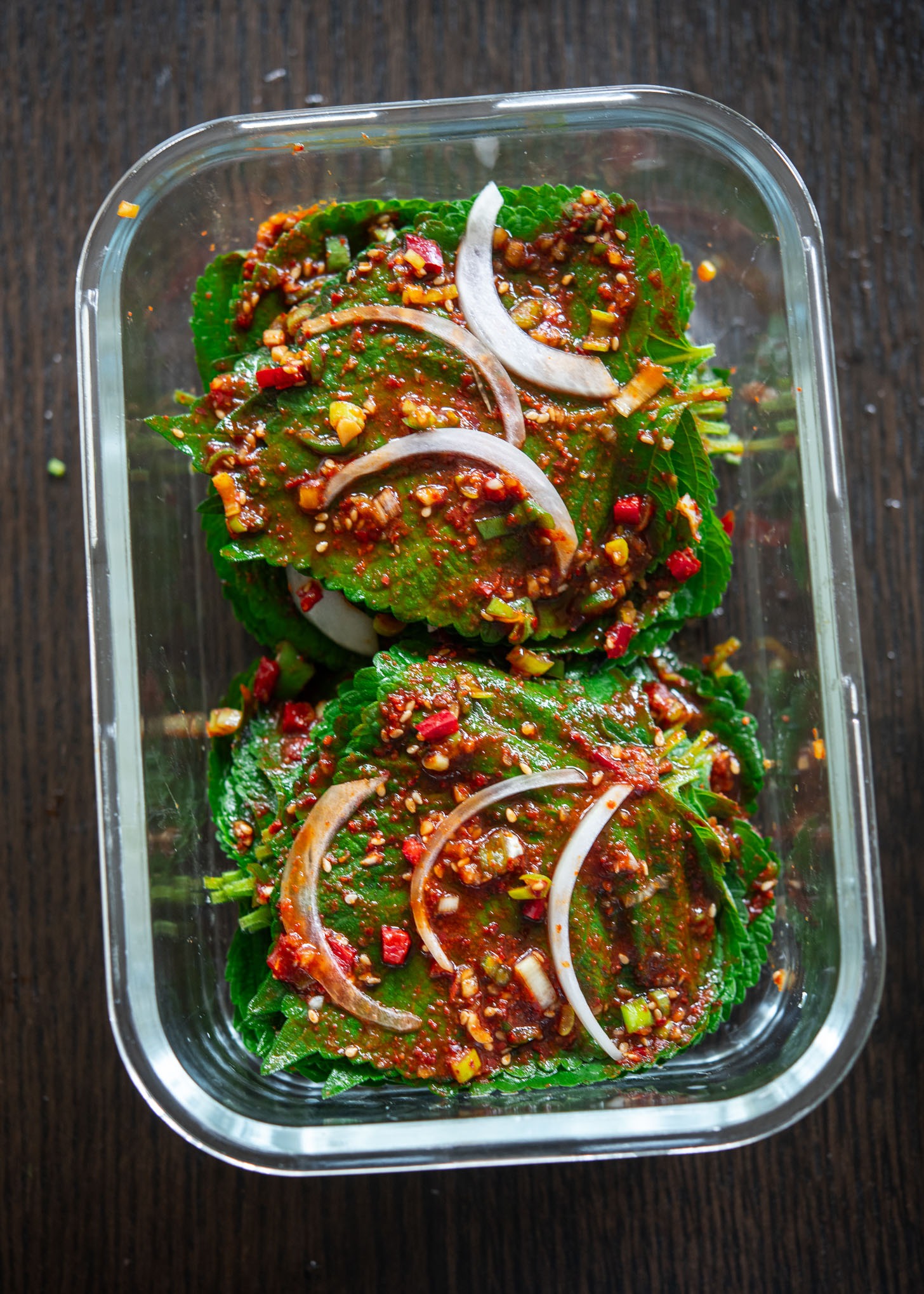
Storage Tips
Enjoy it right away or allow it to ferment in the fridge for a day or two to unlock its full umami flavor. After that, keep it refrigerated—it’ll stay fresh for up to a month!
Don’t worry if the leaves wilt over time; that’s completely normal and part of the fermentation process.
More Authentic Kimchi Recipes
A few of my favorite kimchi are:
- Easy Kimchi Recipe for Beginners
- Ultimate Vegan Kimchi Recipe
- Bachelor Kimchi (Ponytail Radish Kimchi)
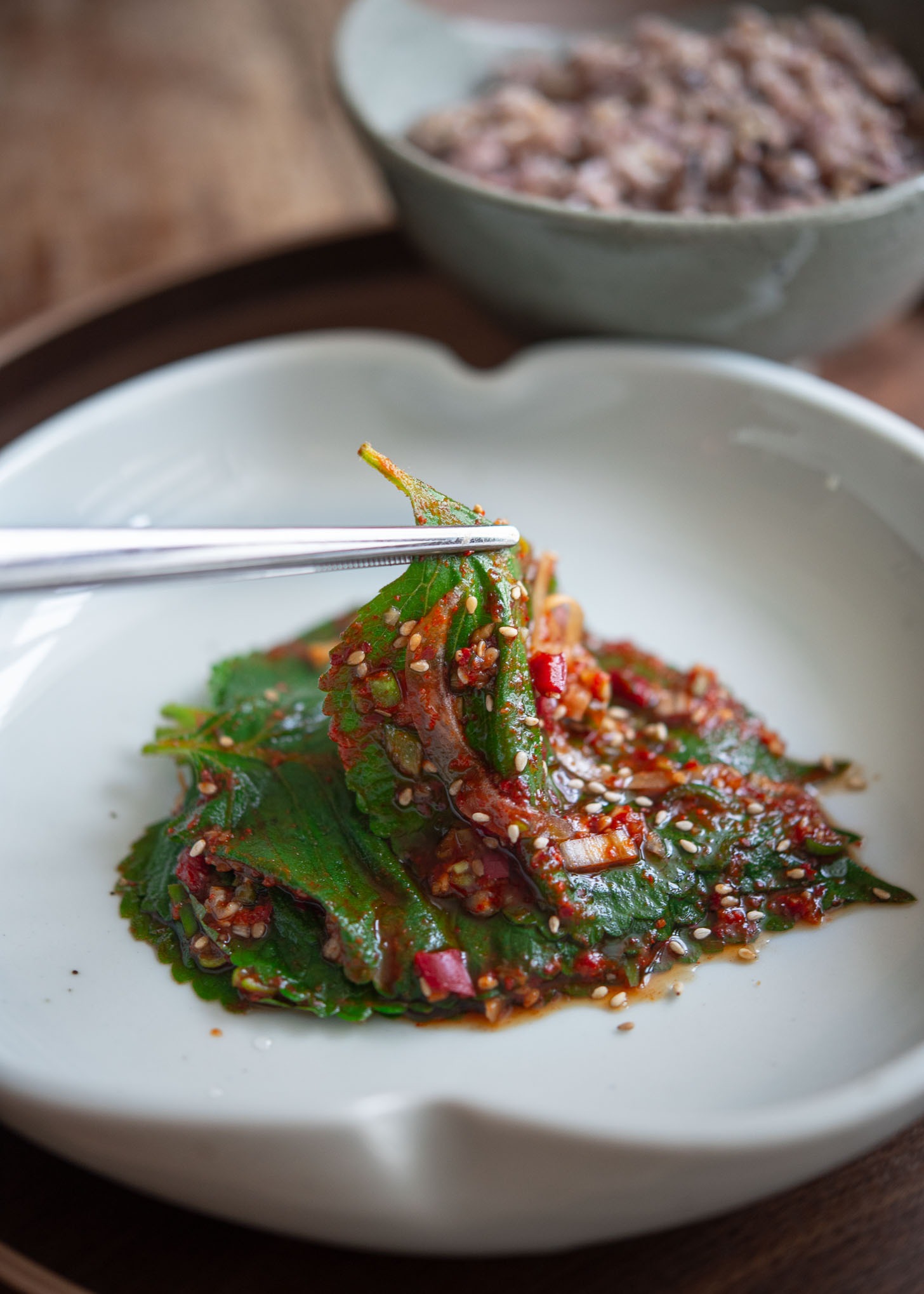
Love this recipe? Rate it and share your experience in the comments below! On Instagram? Tag me to showcase your creation. For more delicious recipes, subscribe to our newsletter!
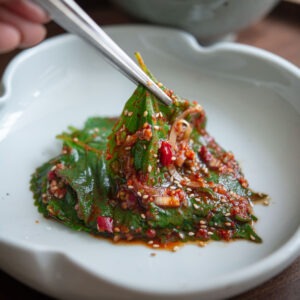
Kkaennip Kimchi (Korean Perilla Leaf Kimchi)
Ingredients
- 70 Perilla leaves, stem trimmed short
- 4 tbsp finely chopped green onion
- 3 tbsp Korean chili flakes (gochugaru)
- 3 tbsp soy sauce
- 2 tbsp Korean anchovy sauce
- 1 tbsp garlic, finely minced
- 2 fresh chilies, finely chopped
- 1/2 cup anchovy stock, or water, divided
- 1 tbsp Korean plum extract (maeshil cheong), or 1/2 tbsp sugar
- 1 tbsp toasted sesame seeds
- 1/4 onion, very thinly sliced
For anchovy stock (optional)
- 4 large dried anchovy
- 1 cup water
Instructions
- Clean Perilla Leaves: Thoroughly clean the perilla leaves by soaking them in water. Use a salad spinner to quickly remove moisture. Set aside.
- Prepare Seasoning: mix green onion, chili flakes, soy sauce, anchovy sauce, garlic, chilies, Korean plum extract (or sugar) and sesame seeds in a small mixing bowl. Add 1/4 cup of the cooled anchovy stock (or water) to form a runny paste.
- Assemble kimchi: Stack 2 leaves, spread a tablespoon of seasoning on the top leaf. Place 2-3 thinly sliced onion strips. Repeat as you stack the leaves together.
- Store Kimchi: Place the assembled leaves in a kimchi container. Add remaining stock to leftover seasoning, mix and pour over leaves. Press down with a spoon to remove air.
- Enjoy it right away or allow it to ferment in the fridge for a day or two to unlock its full umami flavor. After that, keep it refrigerated—it'll stay fresh for up to a month!
Anchovy Stock
- Simmer dried anchovies in water for 5 minutes. Let it cool and discard the anchovies .


This is so good. I am so glad I found your site and recipe.
So happy to hear you liked this kimchi. I am glad that you found my site as well. Thank you very much!
I made this the other day and had some yesterday. SO good!! Wonderful recipe!!
I. AM. SWOONING! My local Korean market had an abundance of beautiful, fresh perilla leaves ready and waiting to turn into perilla leaf kimchi today. I just made it, tasted some, and it it is beyond delectable! I don’t think it’s going to last past tonight, since I am now heating up the broiler to cook the royal Korean beef dish you suggested to go along with it, and my family of 6 keeps coming in saying it smells beyond delicious. Oh my ~ tastebuds are having a party tonight! Thank you!!
I just finished making a batch using your recipe. Thanks! I can certainly understand your comment about perilla and pesticides. I’m growing perilla for the first time (16 beautiful plants) in my garden this year. The leaf-cutters (ants) will cut through the leaves like a bush hog.. Unbelievable!!
Hope you like it. Yes, bugs love fragrant herbs.
I love Ketnip! This looks so colorful and yummy! I can’t wait to try your recipe!
Hi Holly! I just wanted to say thank you for posting all of these wonderful recipes. I’m Korean-American, but I never really learned to cook Korean food from my parents despite having grown up with it. Now that I’m in Paris and have recently found a Korean grocery store, I’m looking forward to recreating the dishes of my youth with the help of your site.
Thanks Diane. It is good to know that there is Korean grocery stored in Paris. Hope you enjoy all the Korean cooking in Paris.
this is probably one of my all time favorite kimchi’s. LOVE it so much!
Love kimchi but perilla leaves just aren’t any shops around here – it’s rarer than hen’s teeth! If I ever lay my hands on some I’ll buy it and make this!
I bet it is difficult to find in some countries. Hope someday…
This is gorgeous and so unusual (to me). Thanks for the recipe — your blog makes me think about food in a whole new way!
Love kimchi but don’t think I’ve had a version with perilla. It looks delicious!
I really need to start growing perilla! It sounds like such great stuff. Nice recipe – I particularly like the idea of anchovy stock. I’ve not heard of that before, and it sounds wonderful. Good post – thank you.
Anchovy adds a good flavor to Kimchi without noticing the flavor. Perilla is great plant to grow in the back yard. Hope you get to look for the seeds.